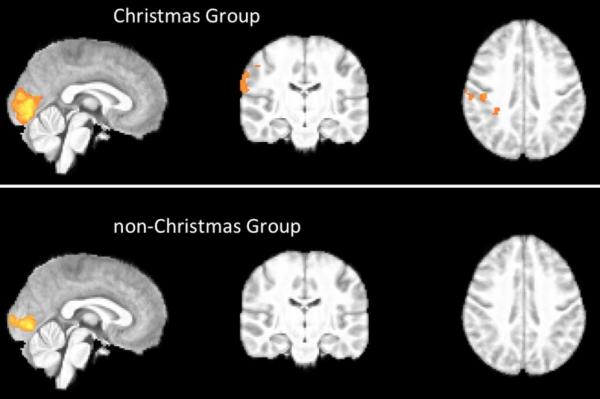
COPENHAGEN, Denmark, Dec. 17 (UPI) — A tongue-and-cheek study — combining real science, holiday cheer and a few jokes — has revealed the location of “Christmas spirit” in the brain.
Researchers at the University of Copenhagen identified a Christmas spirit network via functional MRI scans. The network comprises several cortical regions, including the parietal lobules, premotor cortex and somatosensory cortex.
After taking a survey on their experiences with and affinity for Christmas traditions, researchers divided participants into two groups — 10 participants in the Christmas group and 10 participants in the non-Christmas group.
Participants were then shown a series of pictures, a mix of photos featuring everyday subject matter and images of Christmas-themed scenes — Christmas lights, trees, Santa cookies. The participants were not told about the purpose of the study or image theme ahead of time.
Scientists found no difference in neural activity between the two groups when viewing everyday imagery, but those in the Christmas group showed increased brain activity when seeing Christmas photos — allowing researchers to map the Christmas spirit network.
“These cerebral areas have been associated with spirituality, somatic senses, and recognition of facial emotion among many other functions,” researcher wrote in their new study, published this week in the British Medical Journal.
Jokingly, study authors preemptively accused their detractors of suffering from “bah humbug syndrome.” But they did acknowledge the potential pitfalls of their work.
“The study design doesn’t distinguish whether the observed activation is Christmas specific or the result of any combination of joyful, festive, or nostalgic emotions in general,” researchers wrote.
Researchers also said the Christmas pictures may contain some unforeseen difference that accounts for the different in brain activity, such as higher concentration of the color red. More research is needed, per usual.
Despite potential problems, researchers aren’t ready to give up on the science of Christmas.
“Understanding how the Christmas spirit works as a neurological network could provide insight into an interesting area of human neuropsychology and be a powerful tool in treating ailments such as bah humbug syndrome,” they concluded.






